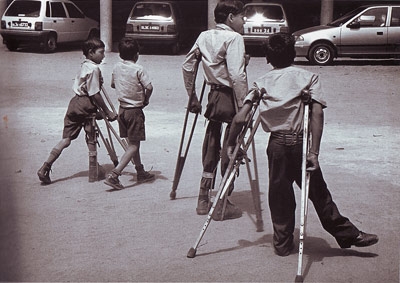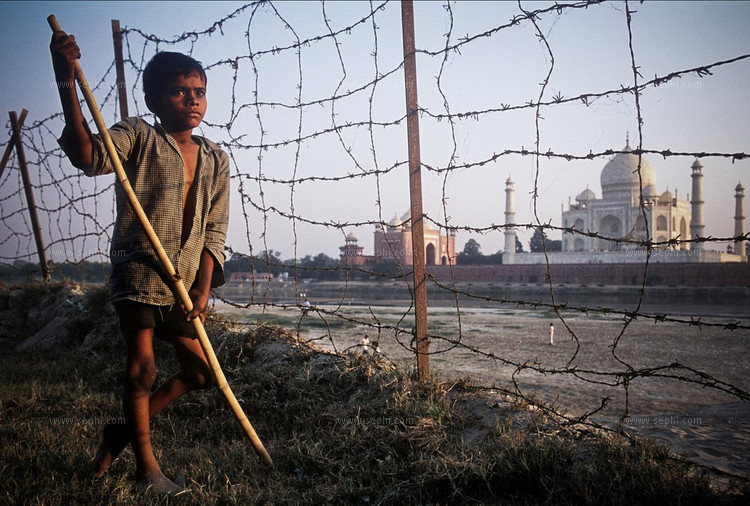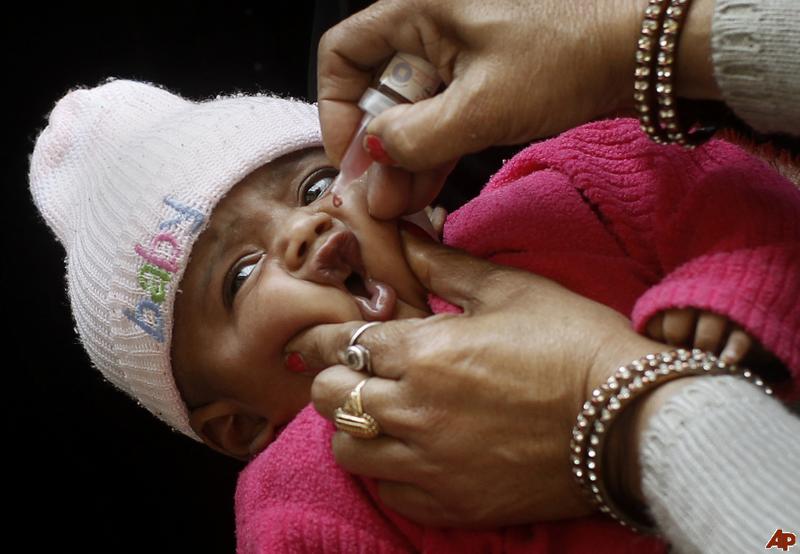 Barely two decades ago, India held more than half of world’s polio cases. In February last year, India's name was struck off the list of polio-endemic countries as there was no case of polio reported in the country for over a year. In three months from now, India will be declared a polio-free nation. A people's movement indeed, with over 23 lakh volunteers who traveled across the length and breath of the country to vaccinate children, India is on the verge of pulling-off one of the greatest public-health coups in history.
Barely two decades ago, India held more than half of world’s polio cases. In February last year, India's name was struck off the list of polio-endemic countries as there was no case of polio reported in the country for over a year. In three months from now, India will be declared a polio-free nation. A people's movement indeed, with over 23 lakh volunteers who traveled across the length and breath of the country to vaccinate children, India is on the verge of pulling-off one of the greatest public-health coups in history.
On 24th October, India observed the world polio day. It was indeed a good day to remember that as recently as 1988, polio claimed 350,000 people each year across the world, 64% of these were from Uttar Pradesh alone. In 2012, the global caseload was just 222, with India stroked off from the list. Polio was eradicated in the Americas by 1994 and in 36 Western Pacific countries, including China and Australia in 2000. Europe was declared polio-free in 2002. The only three countries where polio is still considered an endemic are Nigeria, Pakistan and Afghanistan.
 The oral polio vaccine was introduced in India in 1978. In 1985, Rotary International launched its global effort to end polio everywhere. India was a signatory to the 1988 WHO treaty committing participating nations to be part of that effort. In 1994, the local government of Delhi conducted a hugely successful mass immunization campaign targeting children. This is when the idea began to gain momentum that India might actually be able to tackle this disease. Though other Indian states like Kerala and Tamil Nadu had conducted similar campaigns before, it was the Delhi wide campaign which changed the attitude of the national leaders towards the polio eradication campaign.
The oral polio vaccine was introduced in India in 1978. In 1985, Rotary International launched its global effort to end polio everywhere. India was a signatory to the 1988 WHO treaty committing participating nations to be part of that effort. In 1994, the local government of Delhi conducted a hugely successful mass immunization campaign targeting children. This is when the idea began to gain momentum that India might actually be able to tackle this disease. Though other Indian states like Kerala and Tamil Nadu had conducted similar campaigns before, it was the Delhi wide campaign which changed the attitude of the national leaders towards the polio eradication campaign.

In 1995-96, Indian government started organizing annual national immunization days, and in 1997, India established the National Polio Surveillance Project. In 1999, it set up an expert advisory group that monitored the program and provided continuous evaluation of how the disease was behaving around the country. Eventually, the group declared that the best way to fight the disease was to focus on the states of Uttar Pradesh and Bihar, where polio transmission was uninterrupted. By 2009, only 741 cases of polio were reported in India. By 2010, the number dropped to 42, and by 2011, only one case — as of today, India’s last — was reported in the entire country.
As of date, officially 71% of children in India are immunized against polio, with 98% of children in the highest-risk areas having been immunized. No other health campaign in India as the ‘do boond’ had seen such reach and witnessed such success. It was possible due to the concerted and untiring efforts of numerous health workers, community mobilizers, doctors, nurses, paramedics, over 23 lakh volunteers, along with cooperative mothers and other family members of babies under-five years. In the process, the National Polio Surveillance Project became India’s most extensive public-health surveillance system, while the end of polio in India - as we are heading steady towards that day - will mark one of the largest and most successful people’s health campaign the world has witnessed, ever.
